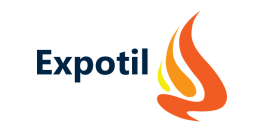
The meaning of SEO Although the meaning of SEO and SEO marketing may seem complicated due to different factors that affect rankings... but the search engine optimization process is easier than it sounds. SEO search engines want to provide their users with the best service. This means that the results provided on the search engine pages are not only of high quality, but also relevant to the content the search engine is looking for. To this end, search engines will scan or crawl different websites to better understand what that website is. This helps them provide more relevant results to people searching for certain topics or keywords.
SEARCH FOR GOOGLE SEO COMPANIES
Similarly, search engines scan websites to determine how easy it is to navigate and read, thereby rewarding user-friendly websites that rank higher in the SERP. . SEO is the process by which an organization ensures that its website ranks high in search engines for related keywords and phrases. For example, suppose you have an article on how to build an aviary. In front of the right person, you might do this. You will try to optimize this blog post to show up as the best result for anyone searching for the phrase "build an aviary." SEO has many benefits for your business. By improving your SEO, you can work hard to expand your visibility in search engines. This helps you reach and attract more potential customers. By creating more engaging and effective SEO-focused content, you can increase your chances of attracting more targeted organic traffic. By adjusting your website and content for greater visibility and readability, it helps to give your SEO meaning. When you may be in a leading position, you should not settle for a lower SERP ranking. Definition of SEO / Meaning of SEO Factors that affect the definition of SEO, the meaning of SEO, and SEO marketing Now that you know the definition of SEO and how it works, you may want to know "How do I conduct SEO marketing?" or "Is SEO effective?" The fact is that SEO marketing is really effective, and the correct implementation can help anyone produce outstandingresults. Let’s take a look at some of the factors that may affect your search engine optimization rankings. Giant, Google will never reveal the exact algorithm they use to rank websites. However, we do have a good understanding of some of the factors that affect the ranking of search engine results pages (SERPs). These factors include on-page and off-page factors, which we will discuss below. -On-page and off-page SEO optimization Content marketing On-page SEO optimization Off-page SEO optimization1. Content Marketing Before we dive into some of the factors of on-page and off-page SEO, let’s talk about content. Types of content marketing Content is effective in attracting search engines and helping your organization connect with website visitors. Through its visual and written content. The more quality and relevant content on your website... the more likely it is for search engines to rank your pages on search engine results pages. Your website, your visitors are more likely to spend some time on your website. Maybe they will even buy it. The secret to creating content optimized for search engines and human site visitors is: ... create various types of content snippets. They should be well written and cover the topics most relevant to your audience. You can pay attention to the following types of content to help show the content you provide, thereby showing your ranking in search engines: blog posts and articles, social media content, e-books and white papers, operation guides and tutorials, videos and recordings , Infographics, or other visual content. Another important thing to consider when creating content for your website is SEO keywords and phrases. They are related words and phrases that search engine users can enter when searching for answers to your questions or related products and services. When you create content around these keywords, you increase your chances of these keywords ranking higher on search engine results pages. However, another factor that may affect your content and your ranking in search engines is your How up-to-date the content is. Freshness basically refers to how often your organization publishes new content to your website. However, creating new content is not the only way. Keep your content up to date. You can also update your content by updating posts, rewriting posts to make them more effective, or adding new information and statistics over time. Although it takes time and resources to create content, in the end it will bring more profits. Search engines like quality content, and consumers need quality content to better understand the value your organization can provide. Create some blog posts and try to build a following on social media. Once you have loyal followers and followers, your organization can work hard to create different types of media to attract and attract new potential customers. On-page SEO optimization case study On-page SEO factors are those elements that occur on your website. These are things you have complete control over, which means you can work hard to improve these factors over time by following SEO best practices. It goes beyond your content marketing and goes to the deepest level of your website’s HTML. Here are some on-page SEO factors that can help you improve your ranking in Google search results: Title tags The title tags on each page tell search engines that your content must contain 70 characters or less, and keywords that include your content focus on you Company name. Let your human visitors better understand the content of the page and whether it is relevant. This should include your keywords and provide enough detail to tell the reader what the content is about. Subtitle Not only does the subtitle make it easier for visitors to read your content, but it also helps improve your SEO. You can use H1, H2, and H3 tags to help search engines better understand your content. Internal links or hyperlinks to other content on your website can help search engines find more information about your website. For example, if you are writing a post about the value of a particular product or service, you can link to the product or service page picture name and ALT tag in your blog post. If you use picture blogs on your website or in your content, You also need to include your keywords or phrases in the image name and alt tags. definition. This will help search engines to better index your images, and these images will appear when users perform an image search for a certain keyword or phrase. When placing your SEO keywords and phrases strategically on your page, it’s important to avoid over-optimization. If you try to use keywords multiple times throughout the content, Google and other search engines will punish your page. In addition, you need to make sure that each piece of content focuses on one or twokeywords. This helps ensure that your content is specific and relevant. Attempting to target too many keywords at once will have a negative impact on your search engine optimization, as it usually results in sparse and inconcentrated content. Although website content plays a vital role in search engine rankings, it is also important to consider the structure of the website. Part of the optimization process is to ensure that SEO is defined in all parts of the page. You want to use a website design that allows search engines to easily scan or track your page. Age and content. It helps to establish internal links between your pages, create a sitemap, and submit the sitemap to search engines. Improving the crawling capabilities of the site can also allow your search engines to better understand your content. The whole point of your website architecture is whether your website is mobile-friendly. Many consumers are searching for information and brands on their mobile devices. You need to ensure that these users can view, read, and browse your website via mobile devices. This will not only affect the user experience, but also your SEO optimization.









Leave a Comment